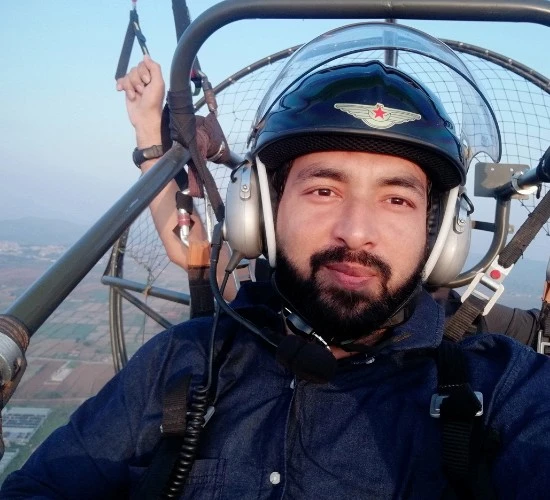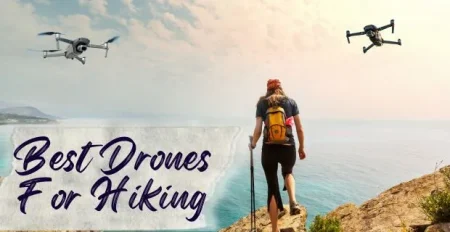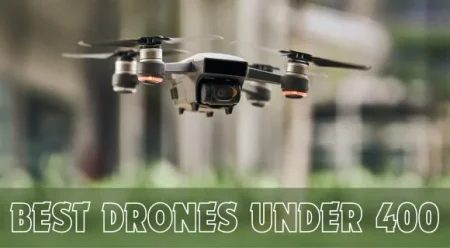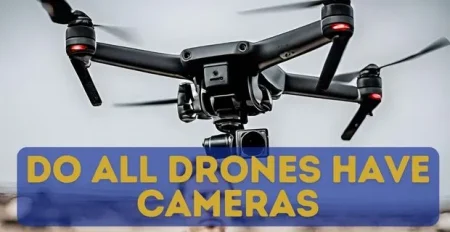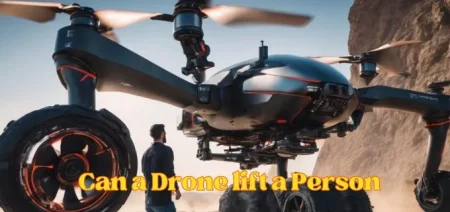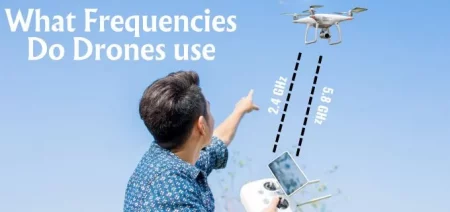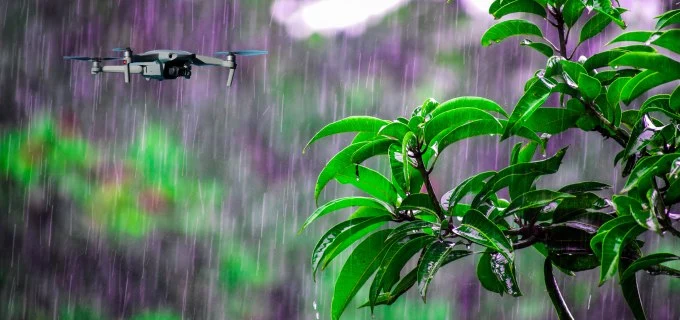
People who love drones and experts who use them are always trying to see what these flying machines can do. One interesting question they often discuss is whether it’s okay to fly a DJI drone when it’s raining. Drones keep getting better, but can they handle rain and bad weather?
Can You Fly A DJI Drone In The Rain
Let’s explore this topic together. We’ll look at DJI drones in detail, talk about the risks of flying them in the rain, and find out if these fancy gadgets can handle stormy weather. Get ready to learn if it’s possible to fly a DJI drone in the rain!
In general, it’s not a good idea to fly drones in windy, rainy or misty conditions, high humidity, or over windy water bodies. Many drones have tiny holes that let moisture in, and if water gets to the electronics inside, it can cause short circuits and damage your drone. If it starts raining while your drone is in the air, the water can mess up the electrical parts and make it stop working, possibly leading to a crash.
Some drone makers create models that can handle a bit of moisture depending on their purpose. But unlike regular drones, waterproof ones have special sealed frames to protect the electronics. They can handle heavy rain, but usually not for too long. An example of a drone like this is DJI’s Matrice 300 RTK, which is supported by Propeller and is resistant to water.
How to Find Drone is Water Resistance or Not?
To figure out if your drone can handle rain, you need to consider a few things:
Check the IP Rating:
Your drone’s manual or online info will have an IP rating. It’s written as “IP” followed by two numbers. The first one is for protection from dust and solids, and the second is for liquids. “The higher the numbers, the better the protection.” If there’s an “X” instead of a number, it means there’s no specific protection info.
Waterproofing Mods:
If you’ve added any waterproofing stuff yourself, it’s important to know it might void your warranty. Be careful with DIY solutions.
Quick Dry After Rain:
How fast you dry your drone after a rainy flight also matters. The sooner, the better to avoid potential damage.

Understanding these factors will help you know if your drone can handle rainy adventures.
Drones that can fly in rain:
Here are a few examples of drones known for their water-resistant features:
- Autel Robotics EVO Lite+:
- Swellpro SplashDrone 4:
- PowerVision PowerEgg X Explorer
We have discuss these drone in our previous blog post best drones for fishing. Following table showing the water Resistance of different drones:
| Drone Model | IP Rating | Water Resistance |
| DJI Mavic Air 2 | IP34 | Limited protection from splashes |
| Autel Robotics EVO Lite+ | IPX6 | Can withstand powerful water jets |
| Skydio 2 | Not specified | Manufacturer guidelines needed |
| Parrot Anafi USA | IP53 | Protection from limited dust and water |
| Yuneec Typhoon H3 | Not specified | Manufacturer guidelines needed |
| DJI Mini 2 | Not specified | Manufacturer guidelines needed |
Risk Of Flying Drones In Rain:
Flying your drone in the rain is a recipe for trouble. It’s like trying to mix oil and water—definitely not a good combo. Here’s why it’s risky:
Water Damage:
Drones have delicate electronic parts that water can damage. Raindrops can get inside the drone and cause short circuits and malfunctions.
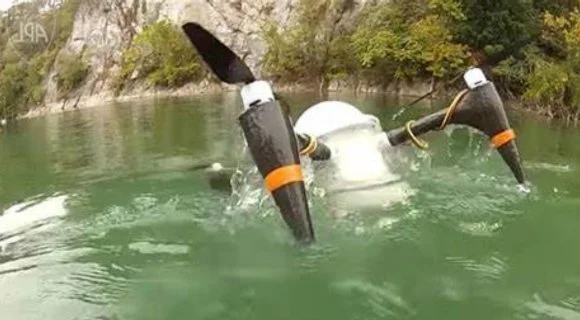
Reduced Visibility:
Rain makes it hard to see, and that makes it tough to control your drone. This makes accidents, like collisions with objects, more likely.
Weight Increase:
Rain adds weight to the drone. Drones are designed to work within certain weight limits, so going over those limits can mess with how stable and well they perform.
Compromised Sensors:
Drones use sensors to navigate, and rain can mess with these sensors. This can lead to mistakes in altitude, position, and detecting obstacles.
Impact on Battery Life:
Rain makes the drone’s battery work harder because the motors need more power to deal with the added weight and air resistance. This can make the drone’s flight time much shorter.
Risk of Corrosion:
Water can cause the metal parts of the drone to corrode, which means long-term damage that affects the drone’s lifespan.
Flying a drone in the rain is like taking a big risk with your expensive gadget. Water damage, reduced visibility, and other problems make it a venture that’s best to avoid. If you really need to use your drone in the rain, it’s better to invest in one specifically designed to handle those conditions.
What to do when you have to fly your drone in the rain:
So, you’re thinking of flying your DJI drone in the rain, huh? Well, hold up! Drones are not waterproof, and that’s a fact. Let’s break down her tips:
- Top-Down Strategy: Start smart by shooting top-down. Point your gimbal directly down to shield your lens from raindrops. Consider flying backward to avoid rain hitting your lens during takeoff.
- Rain Tolerance: Know your limits. Light drizzles might be manageable, but heavy rain? That’s pushing it. Assess your risk tolerance and keep an eye on the weather app for updates.
- Fly Fast, Stay Close:When it’s time to soar, do it fast. Use sport mode for quick maneuvers. Keep your drone close to you to stay on top of changing weather conditions.
- Fly Backwards Trick: If rain surprises you mid-flight, fly backward. This nifty move can salvage your shot by keeping rain off your lens.
- Check Your Surroundings: Before takeoff, survey the area. Ensure you have a clear flight path, and keep an eye out for changing weather patterns.
- Be Mindful of Battery Life: Rain means your drone works harder. Watch that battery life. Flying in the rain can drain it faster, so plan your flight accordingly.
- Dry Off After Flight: Once you’re done, dry off your drone thoroughly. Moisture can be sneaky, and you want your gadget to last.
So there you have it—your rainy day drone flying guide. Fly smart, capture epic shots, and remember, a dry drone is a happy drone!
FAQs
No, DJI drones are not inherently rainproof. While some models may have some degree of water resistance, it’s crucial to check the specific IP rating and guidelines provided by DJI for each drone model. Generally, they may offer limited protection against splashes but aren’t designed to be submerged or flown in heavy rain.
If your DJI drone accidentally takes a splash, don’t panic, but quick action is key. Turn it off, take out the battery, and give it a good drying session with a soft cloth. Make sure everything is dry before hitting that power button again.
If your drone took an unexpected dip in the salty stuff, rinse it off with fresh water to stop any sneaky corrosion. And of course, check out the manufacturer’s guidelines for your drone model to play it safe.
Flying a DJI drone over water can be safe if done with caution and consideration. Ensure the drone has sufficient battery life to return to land, maintain a clear line of sight, and be aware of wind conditions. It’s advisable to check the specific guidelines for your drone model, and if possible, use features like Return to Home (RTH) in case of emergencies.
Yes, rain can potentially damage a drone. Water can seep into sensitive electronic components, causing short circuits and malfunctions. It’s generally not recommended to fly drones in the rain unless the specific model is designed and certified for such conditions. Water damage may void warranties and lead to long-term issues.
Can you fly DJI Phantom 3 in the rain?
DJI Phantom 3 drones are not designed for wet conditions, and flying them in the rain is not recommended. These drones lack a specific water resistance rating, and exposing them to rain can lead to serious damage. Always refer to the manufacturer’s guidelines and avoid flying in adverse weather conditions to ensure the safety and longevity of your DJI Phantom 3 drone.
Final Words:
The temptation to capture stunning rain shots with your DJI drone is undeniable, but it’s crucial to prioritize your equipment’s safety. DJI drones, impressive as they are, aren’t built to brave the storm, both literally and figuratively.
Taking your DJI drone out in the rain risks water damage, reduced visibility, and potential malfunctions—water and electronics just don’t mix well.
Instead of putting your drone at risk, explore alternatives like shooting from above, planning your shots carefully, and keeping an eye on the weather. If rainy shots are a regular need, investing in a drone designed for wet conditions might be a smart move.
The decision is yours, but a careful approach will protect your valuable gadget and ensure you enjoy drone photography for many flights to come. Fly wisely, capture the beauty, and let your DJI drone soar in safer, fair weather conditions.
